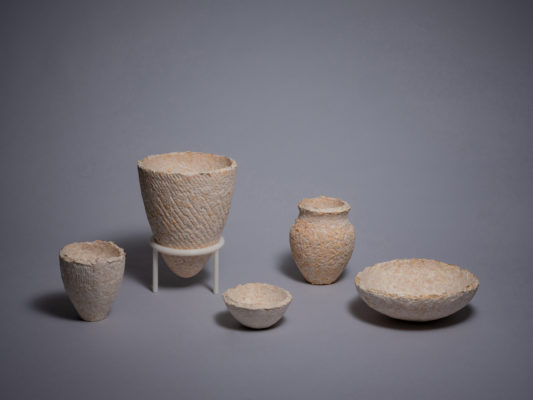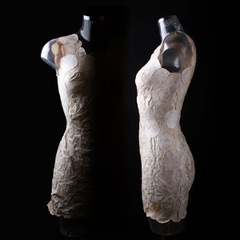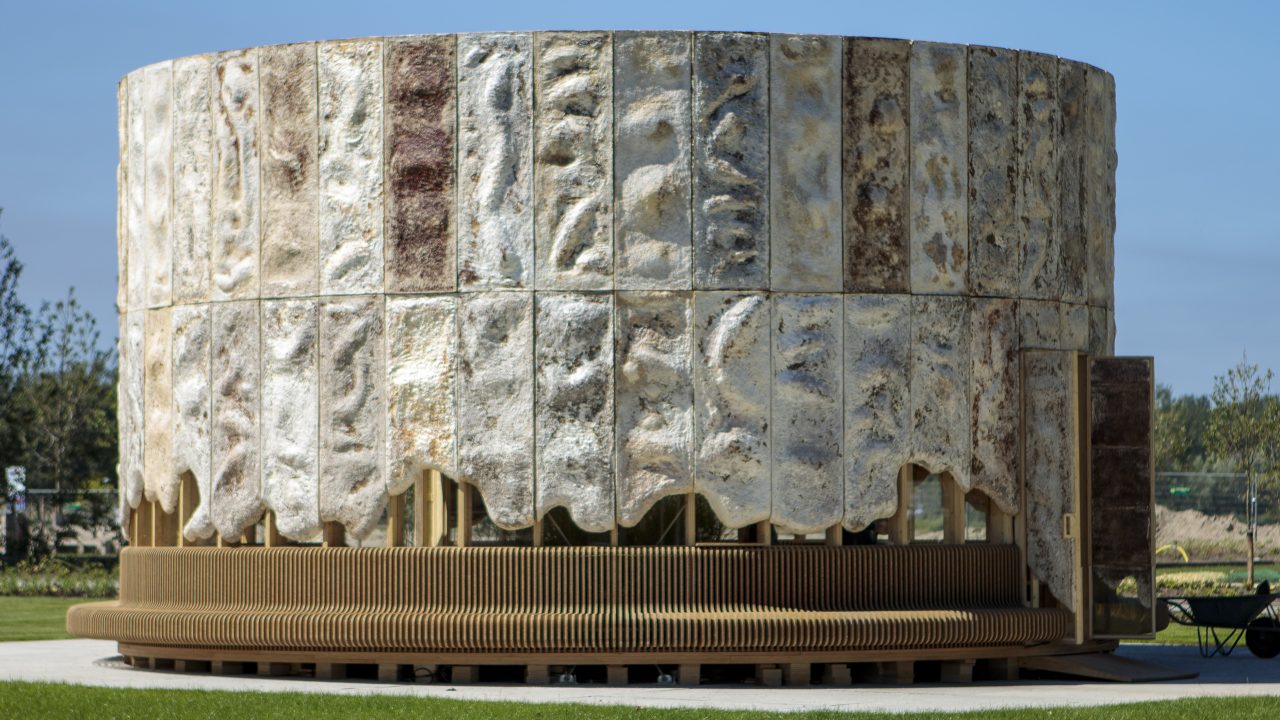This story is part of Next Generation, a series in which we give young makers a platform to showcase their work. Your work here? Get in touch and plot your coordinates as we navigate our future together.
Miriam Lellek was born in Wiesbaden in 1994 and is currently based in Berlin. She studied Cultural Studies and Fashion Design in Berlin and Cuernavaca (Mexico) and recently graduated from the Design Cultures master's program in Amsterdam. At the intersection of design and theory, she engages in creative practices, such as working with upcycling in fashion, as well as in theoretical reflections on the discourse of sustainable design. As the co-founder of Unposed Magazine, she is presenting initiatives and projects concerned with envisioning a future for fashion and design beyond the hype around sustainability. Her current research revolves around the concepts of active matter and its impact on the design discipline. In her future as a design researcher, she strives to combine her interests in philosophy, material research, sustainable design, and crafts. Below is an extract of her thesis.
Designing with Active Matter
The current (western) economy is designed to constantly create new desires, whereby as a consequence things quickly become (aesthetically) obsolete with the launch of a new version of the same item. Subsequently, the obsolete thing is thrown away and we rid ourselves of any further responsibility for those things, assuming that they are gone forever, almost mysteriously vanish. However, these garments, devices, or multiple other products continue to be present in the world and thereby endanger the environment, producing huge amounts of methane emissions and greenhouse gases lying around in landfills or threatening marine life when disposed of in the oceans.
Concerning the apparent discrepancy between ongoing environmental pollution caused by throw- away culture and recent sustainable counter-movements, a philosophical perspective states that the concepts we have of things influence how we deal with them. Following the arguments of New Materialism scholars, our unsustainable behavioral patterns can thus be understood as the result of a long tradition of conceptualizing all matter as passive. This means, that in denying any activity towards matter, the chain reactions, like the environmental pollution of landfills, are forgotten.
New Materialists claim that this “passivization” of matter and the resulting anthropocentric worldview are reasons for humans’ exploitation of nature.
As a response, New Materialists seek a paradigm shift in our understanding of matter and of ourselves to address the growing problems of the Anthropocene. The counter approach is a concept of active matter, challenging the long-dominant concepts of passive matter in the Western/Christian worldview. Historically this perception traces its roots in antiquity, with ancient thinkers developing the idea of atoms (gr. atomos) to describe the smallest, indivisible particle that all matter, including humans, emerge from. Within this worldview, humans are regarded as anchored to nature. On the contrary in the Christian doctrine, God is the source of all existence and declares mankind — created in the image of God — ruler over the natural world.
In later philosophy, the source of this anthropocentrism was the human intellect, such as the ability to think abstractly or to intend action, that set humans at the center of all existence, being the dominant factor in all creations and decisions. As a consequence of this way of thinking, everything that is not human is not equipped with agency and is understood as a mute mass at the disposal of humans to act upon. New Materialists claim that this “passivization” of matter and the resulting anthropocentric worldview are reasons for humans’ exploitation of nature. Arguably, the environmental crisis shows that rethinking these perceptions might be necessary to guide human action in a more considered direction. Nevertheless, it needs to be mentioned that the considerations made here are limited to the extent that they leave out further elaboration of the unequal distribution of human responsibility for the ecological crisis and the resulting responsibility to respond to it and it should be highlighted that the approaches discussed are only Western perspectives.
Design is the aesthetic form of practical world-making.
To address conceptual changes, as Kjetil Fallan claims, design is of central importance, as the human experience concerning the environment today is “increasingly mediated by design and technology.” Therefore Fallan attributes a challenging position to design. On the one hand, design is part of the environmental problem, but on the other hand, might have the solutions and tools for changes. Similarly, Daniel Martin Feige formulates that “design is the aesthetic form of practical world-making”, underlining the ability of design to transmit or implement different world views. Thinking of the conceptual propositions of New Materialism, design thus could be a tool to transmit and reorganize our way of thinking about matter and accordingly how to deal with it.


As one approach, designers are increasingly turning to material research in search of alternatives to the harmful agency of materials like plastics. For example, the bio-fabricated material mycelium, grown by fungal organisms, is increasingly being used in design. As a critical intervention in common, established modes of production, the work with microorganisms questions where humans place themselves in the ecosystem and offers new perspectives not only for sustainable design but also for a reconsideration of our relationship with matter. Projects incorporating these materials propose that design, in its material dimension, could sneak into our understanding of what things do and make us realize what agency can be found in the things that surround us. In the words of Jane Bennett, it can make us realize that matter does not follow a “linear causality”, but rather generates its own emergent interactive encounters.
These approaches open up new ways for design processes that pose challenges for designers in their work. For example, within design processes incorporating active materials, the designer becomes a co-creator, working together with microorganisms to their conditions. The process’s interactive nature becomes evident in forming ideas that depend on and emerge from material properties, rather than imposing an object’s form on a particular material. The growth condition determines the process, where before the form had temporary priority to which the material was subordinate, shifting the idea of an object’s form toward the material.
The designer needs to design out of an ecological web, as the environment will respond.
Considering the focus on materials, as it is termed in the humanities, a material turn is taking place in design. In the words of Tony Fry “designed things go on designing”, meaning that once a thing is created it goes on shaping the world in ways that might exceed its intended purpose. Designed objects will not only serve a practical purpose but go on “designing” the understanding of the world and how to behave in it. With this fundamental attitude that things have an agency that exceeds our intentions, things can be designed differently and, above all, more sustainably. In conclusion, as Fallan describes: “the designer needs to design out of an ecological web, as the environment will respond” and designers should consider this quality of design.
Header image is The Growing Pavilion by Pascal Leboucq featured at Floriade 2022 as part of the Dutch Innovation Experience.

Share your thoughts and join the technology debate!
Be the first to comment